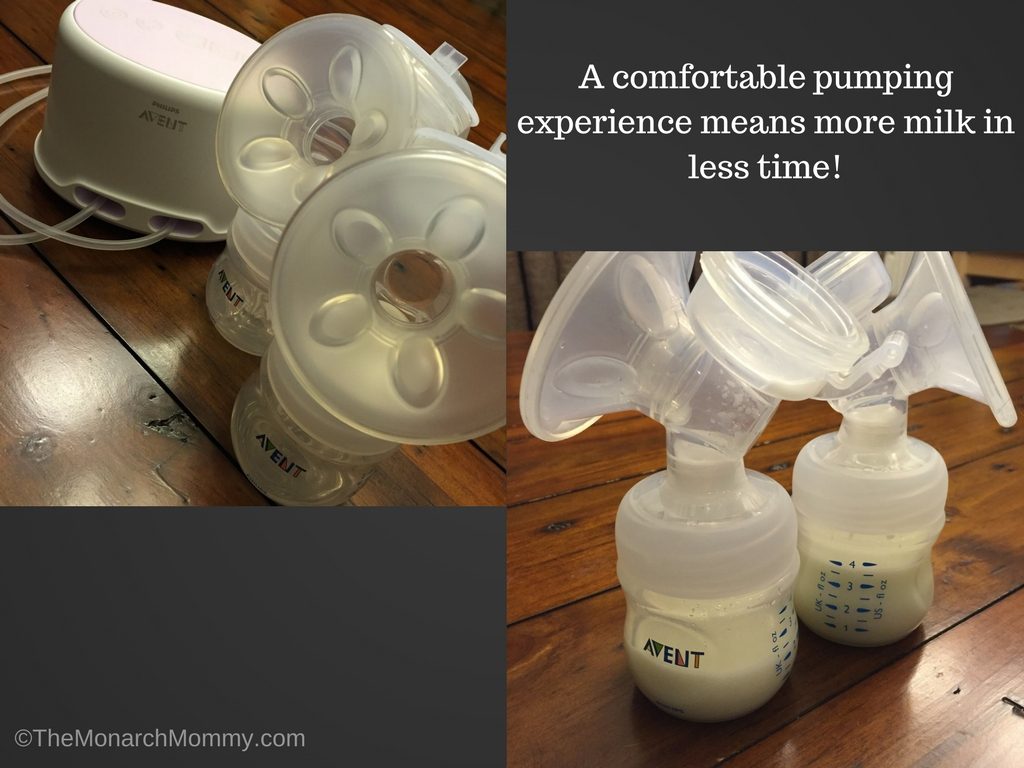Updated on April 6, 2017
Six Tips for Donating Breastmilk #AventMoms

I received compensation for this post. All opinions are my own.
It may come as a surprise to some of you that breastmilk donation is a “thing”. If you’ve been following my blog for any length of time, you’ll probably have noticed that it’s a “thing” that I do. I make no secret of my breastmilk donor status, and love sharing my experience with breastmilk donation to anyone who will listen! The one question that comes up most often when someone learns that I’m a breastmilk donor is “how did you do it?”. That’s exactly the question I’m going to tackle today! There was definitely a bit of a process to becoming a breastmilk donor, but once I got going and found my groove, it really just became a normal part of my daily life. There are six things that were crucial to my success as a breastmilk donor, and I’m going to share them with you!
Before I get into my tips for breastmilk donation, I want to cover one thing. The most important part of breastmilk donation is YOUR baby and YOU. Your baby’s needs and your own needs have to come first. If your baby is healthy, breastfeeding well, and getting all the breastmilk he or she needs from you, that’s awesome! If you have extra milk, look into breastmilk donation. However, if you or your baby are struggling with breastfeeding or even just with life as a new mom (we’ve all been there), do not feel any pressure to even consider (or continue) donating breastmilk. Your’s and you baby’s health and well-being must always come first. If you’ve made the decision that breastmilk donation is something you’d like to try, here are my tips to help you get going!
1. Find a milk bank. Your milk is in, you have a little extra, and you’re wanting the share it? The first thing you need to do is find a milk bank! If you’re in Canada, there are only three milk banks to choose from: The BC Women’s Provincial Milk Bank, The Rogers Hixon Ontario Human Milk Bank, and The NorthernStar Mothers Milk Bank (in Calgary, AB). If you’re not located in one of the three provinces of Canada with a milk bank, contact NorthernStar Mothers Milk Bank as they do accept donations from breastfeeding mothers across Canada. If you’re in the USA, you can find a milk bank through the Human Milk Banking Association of North America. Once you’ve chosen your milk bank, give them a call or an email and ask how you can sign up as a donor. This is the best way to determine whether breastmilk donation is something you are able to do! Don’t assume you won’t be eligible! Give them a call and ask!
2. Consult your health care provider. Once you’ve chosen a milk bank, the next step is to consult with your health care provider. This can be your family physician, your nurse practitioner, or your midwife, but one of those health care professionals will need to sign off on some paperwork confirming that you are in good health and that your baby is thriving. If you have any concerns about breastmilk donation and the way it may impact your health, ask your care provider! Don’t be shy! Ask them anything that might concern you about the process.

3. Create a pumping schedule. Although you don’t need to have a set pumping schedule in order to be a successful breastmilk donor, I found it particularly helpful! I didn’t want to be a slave to the pump, but I did want to be able to donate on a continual basis for as long as I was able. The key for me was to set up a pumping schedule that fit into my day with my children. When I first started pumping to donate, Petit Prince was about five weeks old. He was in that super sleepy phase where he wasn’t spending a whole lot of time awake during the day. At first, I pumped in the morning after Petit Prince’s first feed. He’d usually go back to sleep right after that feed, so I was free to pump at that time. This worked out quite well for me until September hit and The Heir started preschool. I was going to need to have both kids dressed, fed, and ready to leave the house by 8:30 am twice a week. That meant I’d have no time to pump on those mornings and that was going to leave me feeling full and engorged on those days. I decided to move my pumping session to the evening. The timing that worked best for me was a couple of hours after Petit Prince went down for the night. He most definitely was not sleeping through the night, but he was fairly consistent with waking to feed about 3 or 4 hours after he went down for the night. I would pump two hours after Petit Prince went down for the night. At first, I didn’t get much milk at that time, but I kept at it. After a few weeks I’d “tricked” my body into thinking it needed a full feed two hours after Petit Prince went to bed. This is the beauty of scheduled pumping! Every night around the same time for about 17 months, I pumped. The amount I could pump did fluctuate, and there were certainly times when Petit Prince was going through a growth spurt and he’d nurse at my scheduled pumping time (I’d skip pumping on those nights). In the long run, this is what worked best for me. By taking advantage of the supply and demand function of my body, I created a demand for a full feeding with the pump and my body followed through with extra supply at the scheduled time.

4. Get a great pump. This is really important. If your pump isn’t effective at triggering a let down or isn’t comfortable to use, you’re not going to want to pump! My pump of choice is the Philips Avent Comfort Double Electric Breast Pump. If there’s one thing I’ve learned about breast pumps from being a breastmilk donor, it’s that if you can’t get comfortable and relax, you’re not going to be able to pump as much milk. The Philips Avent Comfort Double Electric Breast Pump is so comfortable to use thanks to the soft massage cushions that sit inside the breast flanges. These cushions make the pump feel less like it’s pulling or tugging and more like a gentle vibrating massage. It stimulates my let down really well and results in great milk flow. The Philips Avent Comfort Double Electric Breast Pump is also angled in such a way that you don’t need to lean forward to pump. Most of the time, I pump while I’m in bed (it is the last thing I do every night, after all). I actually sit leaning back slightly and I’ve never had any trouble with milk splashing back in the flanges or spilling with this pump. The Philips Avent Comfort Double Electric Breast Pump has a dedicated stimulation mode to gently trigger your let down and I love that! I need those really fast bursts to get things flowing, and having a dedicated setting for that on my pump is key. The Philips Avent Comfort Double Electric Breast Pump also has three expression settings so you can find the right speed and suction level for optimal output. I go back and forth between the lowest and the medium setting. Both work great for me, but some times I need a little more “oomph” so the medium setting provides that for me. Since I always end up pumping quite late at night, I need a pump that’s easy to clean and easy to put together because, well, I’m tired at night! The Philips Avent Comfort Double Electric Breast Pump is super easy to clean (my bottle brush fits well into all the crevices) and putting it together is a breeze! When my pump output was at its peak (around the time Petit Prince was 4 to 8 months old), I was pumping over 4 oz per side in one session. Although the Philips Avent Comfort Double Electric Breast Pump comes with two 4 oz bottles to pump into, the flanges can attach to any Philips Avent bottle. I was able to grab some of their 9 oz bottles and use those with the pump when my output was particularly high.

5. Make room in the freezer. Actually, my advice here would be to get a deep freezer! Space in the freezer is an absolute must when you’re donating breastmilk. At NorthernStar Mothers Milk Bank, the initial donation must be at least 150 oz, and subsequent donations have to be at least 50 oz. That’s going to take up a little room in your freezer, and depending on the type of containers your milk bank provides for milk storage, it might take up a lot of room in your freezer. Now I managed to get by with just the freezer drawer that’s part of my regular fridge in the kitchen. Sometimes space was at a premium and I’d have to make a run to the milk bank to drop off milk in order to free up space in my freezer (especially around the holidays). For this reason, I’d recommend getting a deep freezer/chest freezer if you can! It’s not an absolute must have, but I can tell you that it sure would have been nice!

6. Have a back up plan. That sounds much more dire than it is, I promise! Having a back up plan for milk that can’t go to the milk bank or for milk pumped while you’re out of town is important! There are a variety of reasons why you might not be able to donate some of your milk to your milk bank of choice. Each milk bank will be different, but they will all have a set of requirements in place to ensure the milk donated is as safe as possible for preterm infants in the NICU. One of those requirements was that I not consume any alcohol for at least 6 hours before pumping for donation. If I’d had a glass of wine with dinner I couldn’t donate the milk I pumped that night. No big deal! I’d pump anyway, mark the container so I knew it couldn’t be donated, and stored it in the corner of my freezer. When I was on antibiotics for an ear infection, I couldn’t donate the milk pumped for two full weeks after taking the last dose. If I stopped pumping for that length of time, I knew my supply would drop and I might not be able to continue donating at all. I kept pumping, made a note on the storage containers, and stored it in that corner of my freezer. What did I do with all that extra breastmilk? I joined my local Human Milk 4 Human Babies group on Facebook, and I posted that I had milk available! Private breastmilk donation is a great way to continue donating when your milk can’t go to the milk bank. Of course you always need to disclose the reason your milk can’t go to the milk bank so the mother receiving it is fully informed before taking the milk. Private breastmilk donation was my back up plan!
What about going on vacation? I did have one 2 week holiday during my time as a breastmilk donor, and I took my Philips Avent Comfort Double Electric Breast Pump with me! I love that this pump is lightweight and portable! It even comes with a travel bag that fits all the parts with room to spare. It was perfect to pack along for my holiday. I did keep to my pumping schedule during my holiday (both to maintain my supply and avoid engorgement), but I wasn’t going to be able to transport all the milk home with me without some (or all) of it thawing before I got home. My back up plan for that milk was to look to private donation again! It was great to find someone locally who needed the milk for her little one.

Breastmilk donation was such a big part of my first 18 months as a mom of two! It’s something that took persistence and patience to get started, but once I found a way to fit it into my day, it just became another part of my life as a mom. The Philips Avent Comfort Double Electric Breast Pump has been a big part of my journey through breastmilk donation, and I can’t say that I would have continued pumping and donating for as long as I did if it weren’t for this pump. It’s no surprise to me that it is a PTPA (Parent Tested Parent Approved) Seal of Approval winning product. It’s just a great pump that makes pumping easier and more comfortable. Over my 18 months as a breastmilk donor I donated a total of 77.5 L (2620 oz) to the NorthernStar Mothers Milk Bank, and 14.5 L (490 oz) through private donation. All the milk donated to the NorthernStar Mothers Milk Bank was pasteurized and provided to NICUs across Canada. I can only hope that in sharing my experience with breastmilk donation that I have encouraged other breastfeeding moms to consider signing up as breastmilk donors themselves!
Are you interested in becoming a breastmilk donor? Ask me any questions you might have about breastmilk donation in the comments below! If you’ve been a breastmilk donor, I’d love to hear any tips you might have for others who might want to donate!
Learn more about the Philips Avent Comfort Double Electric Breast Pump HERE. You can connect with Philips Avent on social media by following them on Facebook and on Twitter.
How would you like the chance to WIN one of two Philips Avent Sterilizer Gift Sets? Two lucky Canadian readers have the chance to win! The giveaway is open to Canadian residents (excluding Quebec) and closes on March 12th, 2017.
Philips Avent Sterilizer Gift Set
Giveaway
Disclosure: I am part of the PTPA Brand Ambassador Program with Philips Avent and I received compensation as part of my affiliation with this group. The opinions on this blog are my own.











Wow, you are amazing! I love the idea of a milk bank and had no idea they existed in Ontario. Thanks for sharing your story 🙂
I did have a pump, but didn’t use it right away (I probably should have!). I found that I leaked so much from the other breast when feeding, that I should have had something to catch that milk as it was lost. Donating to the milk bank is something I’d like to do during my next pregnancy, and this set would really help.
I have a hand pump that I use once in a while. I waited too long to introduce a bottle but my guy is obsessed with drinking out of cups so he gets pumped milk that way.
I don’t pump frequently, only when I know in advance that I’ll be away from my son for more then a couple hours. Otherwise I’m completely unprepared for an unplanned outing.
I pumped multiple times a day, so a good pump is essential for me.
It’s an amazing idea bring able to donate breastmilk.
I didn’t know what a milk bank was until my daughter in law had her baby at the local hospital and she used it when my grandson was born due to her low milk supply.
I did use a pump with my son but not very often because he wouldn’t take anything but the breast.
No I didn’t need to use a breast pump when feeding
i really want to donate some liquid gold if i am fortunate enough to make more than my baby needs. good job, mama!
I think it’s awesome that you guys are donating so much breastmilk. As someone with a condition called Insufficient Glandular Tissue, I could never make enough milk for my sons. If you’re able to make more than you need, I think that’s fantastic to donate it to someone who needs it!
The only way I was able to pump for the first year of my little ones life was pumping while she was feeding on the other side. I’ve never been able to get a letdown from my Medela pump alone, ever! I was fortunate enough to have a freezer stash this was though. Really hoping next baby to try an Avent and hopefully be able to sit down and pump without a baby on one side 🙂
I did use one and appreciated the option.
I’m almost up to 11 months and 80 litres donated to NorthernStar! It’s such a great place.
This came just after I have decided to stop pumping. I was not able to fogure out where to donate my gallons of breast milk lol. With my first I had a ten gallon supply built up bybthree months and decided to use that up and only nurse when on the go or at night. And with my youngest. I breast feed majority of the time. But I just threw in the pump lol which I too am an advent lover. I have ten gallons and he is is six months. So now its time to let him feed himself lol.
I did use a breast pump whenever I had to go out. I found it hard, but I did it.
this is awesome, i wish i made enough to donate when i’m nursing.
I informally donated milk to two babies while I nursed my first. Milk donation is so needed!
Entering this for my wife..
Wow, can I just say that you’re a rock star! That’s amazing! There isn’t a milk bank around here but I hope that as more people become aware of the benefits of breast milk that they become more widespread!
I’m so thankful to all the mothers who are led to provide this very important gift, as my grandson needed donor milk for the first week of his life until he figured out how to nurse properly with the help of a very knowledgeable nursing consultant.
It is awesome that you were able to donate so much milk! I am interested in pumping and possibly donating, but i don’t have a ton of freezer room. Do the milk banks give you storage containers or do you have to buy all of those?
That is amazing! If we are able to have another baby and we are both doing well, I would like to donate some milk! I wonder if all breast banks require that much milk?
being able to donate breast milk is amazing,i’m so happy you can do this !
I see more and more about milk donation which is so great. More hospitals should host milk banks. I see a lot of private shares online, just moms donating to one person in need, but I think more people would use the service through a milk bank. What a great thing to do.
I think this is such an awesome idea.This would be a lifesaver for Moms taking a med, sick or for whatever reason. I know they have milk banks in a couple of places around.
I really like the idea of donating breast-milk to help those who need it. I never had an over-production, in fact I pumped to increase my supply so that I had enough for my own babies.
Thanks for posting this – I am six weeks post partum and trying to figure out if I can donate plus have some for the occasional bottle when I am not available. Did the bank provide the containers for you? I think the Hema Quebec does but they’re guidelines for sterilization on top of what I’m already doing seem a bit daunting.
I cannot say how much I love this and how blessed you are to donate!!
A question about pumping in bed late at night – did you then get up to put it in the freezer? I live in a three storey house and am just starting out donating, but the logistics are a bit of a nightmare! I think I might have to pump just before I go up to bed.
I pumped into bottles and then would pour the milk into the storage bags for the milk bank. So either way I had to get up and go down to the kitchen. The kitchen is only one flight of stairs down from our bedroom, so it wasn’t a big deal for me! I just preferred sitting cozy in my bed while I pumped. 🙂
Hey there
Im just wandering coz u pumped so much did u have any affects on ur boobs … im currently pumping at least 1nce sumtimes 2ce a day for a milk bank and have been doing that for bout 2 months now and plan on donating 4 as long as i can but have just read that pumping frequently can cause saggy boobs ??
I don’t think so. I didn’t find pumping made any difference compared to just feeding at the breast as I did with The Heir.